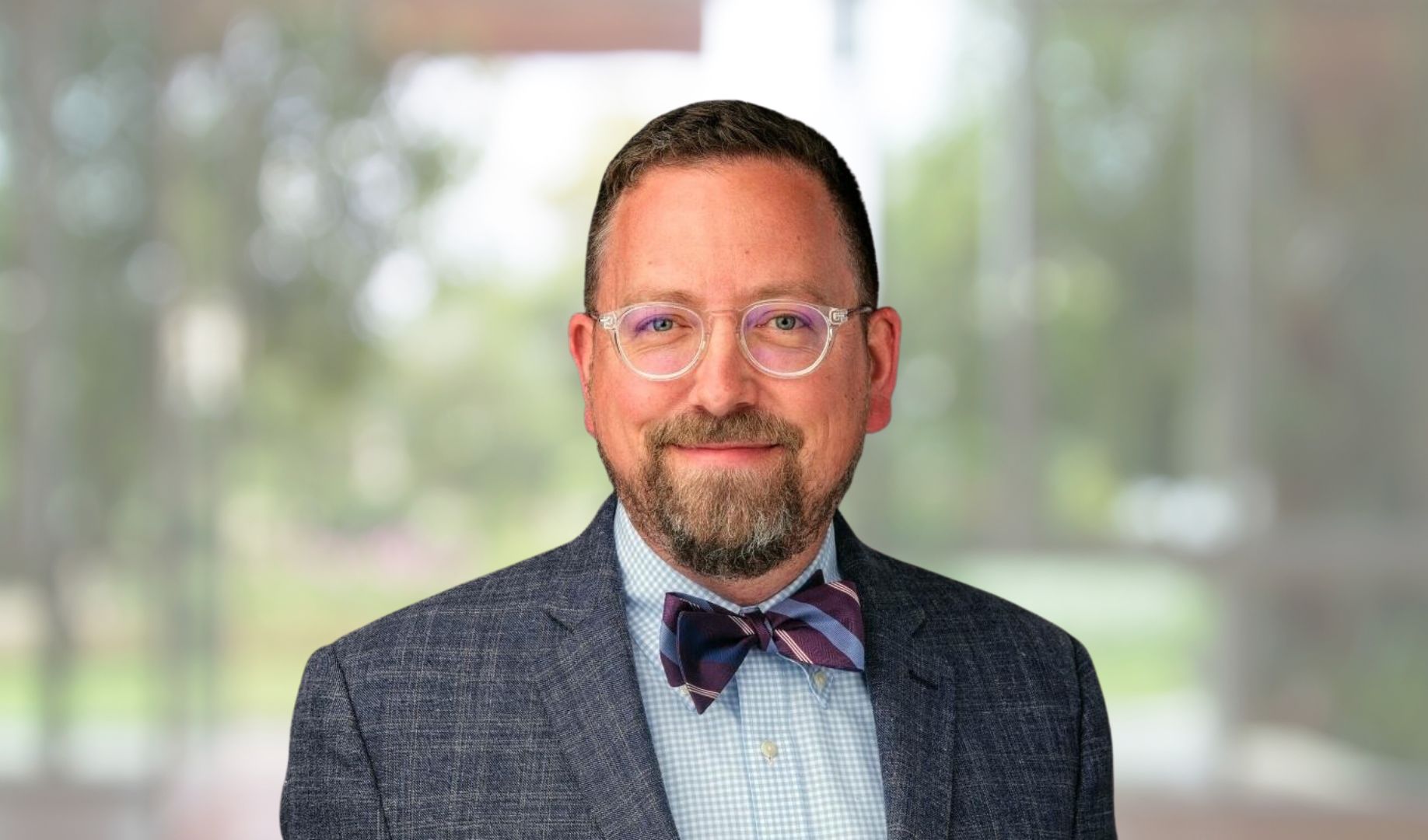Divurgent’s VP, Analytics Jeff Fuller speaks with UNC Health’s CAO Rachini Moosavi about AI adoption, challenges, and beyond.
Adopting artificial intelligence (AI) in healthcare is no longer just an option, it’s a responsibility.
AI is poised to revolutionize the healthcare industry, benefitting clinicians and patients alike in infinite ways. By streamlining clinical operations and harnessing data analytics, AI enhances efficiency and empowers data-driven decision making. The healthcare user experience is elevated through AI’s ability to expedite diagnoses and personalize treatment plans. And proactive health monitoring enables better preventive care. Embracing AI is not just a technological leap but a strategic imperative to provide unparalleled care, efficiency, and connectivity in the rapidly evolving landscape of healthcare.
Yet, despite the benefits, some healthcare organizations remain cautious. Whether it’s the fear of a monumental or costly undertaking, or the belief that the technology isn’t ripe enough, there exists a hesitancy of adopting too swiftly. But the time has come to flip the script and ensure that healthcare, a field so integral to countless lives, is at the forefront of innovation.
To achieve this, we must not only keep pace with technology but also challenge the outdated notion that healthcare remains decades behind. As AI advances at record speed, it’s equally crucial to navigate this journey with careful adoption, planning, and governance.
Enter Rachini Moosavi, Chief Analytics Officer with UNC Health and an AI leader in healthcare. UNC Health is currently creating an AI framework that ensures this technology is being developed responsibly. This ‘Responsible AI’ framework is based on a four-box model of fairness, accountability, trustworthiness, and transparency.
In the following Q&A, Jeff Fuller (Divurgent Vice President, Analytics) speaks with Rachini, who shares insights into the adoption, challenges, and indispensable role of AI in shaping the future of healthcare.

Rachini Moosavi
Chief Analytics Officer
UNC Health

Jeff Fuller
VP, Delivery
Divurgent
AI Adoption, Challenges, and Beyond
(Jeff Fuller, Divurgent) What barriers must health systems overcome before starting their AI adoption journey?
(Rachini Moosavi, UNC Health) The first step, even before you hire your first person, is preparing your executive leadership, as well as the different operational and clinical leaders around you, to understand how ready they are to embrace the potential for AI.
There’s a lot of opportunities that healthcare can take advantage of and sometimes we get in our own way of pursuing it. But sometimes it’s also because we try and jump into it and treat AI just like any other technology. If the intent is to build it right, so your production is around AI adoption, that doesn’t always have to mean you’re building it yourself. You can partner with and find vendors that can help bring it into the way you work and ensure it becomes a part of your organization.
However, if the intent is to build it yourself, there’s an even greater degree of collaboration that has to exist between your clinical and business stakeholders and your development teams. It then becomes making sure you’ve got the right infrastructure to be able to bring on a team of data scientists who will figure out how to make their world easier.
Data is 80% of the work. We need to try to make sure that access and ease to get at data is streamlined so they’re less frustrated and have access to key stakeholders. It really comes down to enablement at the end of the day for both your team and those that benefit from it.
Also, don’t just build it for the sake of building it. Sometimes we want to jump after the shiny objects, but if you’re going to make the AI investment, it’s critical to ensure you know exactly how you want to incorporate it.
Figure out your pathway for making it easier and understand what the use case is and why it’s being adopted.
(Jeff Fuller, Divurgent) What advice do you have for health systems interested in adopting responsible AI but have yet to begin?
(Rachini Moosavi, UNC Health) It’s important to do your research. Look more broadly across all the organizations out there that are trying to share information. I was just on a conference call earlier this morning and one of the panelists reminded us that we have to keep these conversations going, keep sharing and pursuing these kinds of capabilities for responsible AI together and frequently. We have to hold each other accountable, and this is where that continued conversations with folks, whether inside your health system or outside, are important.
But also include your experts and those wanting to pursue AI. Bring them into those conversations around what do we hold our vendors and ourselves accountable to when we’re building. Talk to your equity and inclusion leaders, your ethicists, your legal and privacy folks. Make sure that they’re built into the framework that you develop for your organization and the things that you’re measuring.
(Jeff Fuller, Divurgent) What’s the current status of your responsible AI framework? Has the planned survey taken place, and if so, what are the findings? Is there a workgroup, and what stage of development are you in?
(Rachini Moosavi, UNC Health) Honestly, when it comes to our responsible framework, I don’t think it’ll ever be done. I think it’s one of those things that, rightfully so, needs to continue to evolve and be a living thing that we learn from and build open continuously.
At this point, we’ve taken one vendor through our survey. They used our questionnaire to give us responses that fit into our fairness, accountability, trust, and transparency model. With their responses to those questions, we brought it back to a smaller team of data analytics/AI experts. They summarized the results and presented a recommendation to our AI and Automation Advisory group (AAA), which now includes an ethicist, who heard and reviewed these recommendations. They saw the response from the vendor, and then they voted on next steps with that vendor. That’s the very first assessment we’ve taken through this process. From there, we’re hoping to do about 2 or 3 more before we go back to AAA, or even the group that helped create the responsible AI framework, and gather lessons learned and make any needed tweaks.
(Jeff Fuller, Divurgent) Have you encountered organizational resistance to your approach in general?
(Rachini Moosavi, UNC Health) Well, you know, I think there’s always going be people that are cautious around AI, and I think that’s appropriate.
We have to be able to hear all of the positive and negative comments. The CEO of Microsoft said we have to maximize the benefits and mitigate the risks around AI because that’s the best that we can do to effectively adopt this kind of technology.
There’s a couple of things that have come up that that we’ve been responding to. One came up through our own development work with Generative AI. The fact that you can ask a Gen AI chatbot the same question multiple times and get different answers, or different versions of answers, shows it’s giving you a natural language response back. It’s unsettling to some folks.
Another piece to that is it’s hard to wrap your head around the fact that the Gen AI is not always going to be right. Even though it’s well trained with a whole lot of data, you still need to verify and validate before you use it for anything. We’ve already stumbled into that. So, in developing one of our own tools, our plans for development of Gen AI are to help our own workforce and teammates.
One of the examples we’re using is to take our own EPIC training documentation and build a chatbot on top of that. Any person working in EPIC can ask the chatbot questions. To determine how well it’s doing, we created a 1 – 5 scoring system to have our experts verify the accuracy of responses and how happy they were. It’s very much an accuracy matter, but the other part of it is satisfaction. The first time around we got about a 2.8. We’re not aiming for a 5 in order to release it because it’s not that kind of technology. But, to help folks understand what is satisfactory, and how many more tweaks we go through in development of this tech to get better responses, we’ll have to figure out as we go.
(Jeff Fuller, Divurgent) How is your mission to increase opportunities for women in STEM progressing? What discoveries have you made, and what initiatives or involvements have contributed to growing this interest for women?
(Rachini Moosavi, UNC Health) I’d like to broaden that from women to minority groups. This has a really big play in responsible AI as well. We are blind to our own biases. We need to have full representation of the people who are doing the work.
I’ve had people in my analytics network say if you compare the percentages of diversity within an organization to the number of folks that are graduating with those degrees, we can only do so much, and that we’re actually matching close to that. Then the question really becomes, why aren’t we helping to change that?
For me, I think there’s more we can do to partner with early education and college education. There’s more we can do to bring people into healthcare data and analytics because we’re often not as competitive with the pay and benefits. But we absolutely need everyone to be considering the potential that they can bring.
It’s about having early conversations often. It’s about saying yes when groups like Her Spark reach out – which is a group that equips young ladies with STEM skills – and introduce them to opportunities and to health systems like UNC health. For a portion of a day, host them and teach them about what their opportunities are in STEM.
It’s about saying yes to universities, especially HBCUs and others that have opportunities for you to talk to students. Or even in in our own backyard, like the School of Data Science and Society, reaching out and talking to their folks about what can the world of data and analytics actually do for health care?
I am passionate about getting more women in tech and North Carolina has a phenomenal women in tech organizations that I’ve been privileged to either be part. But I think we also need to think holistically about who we’re encouraging to join us.


